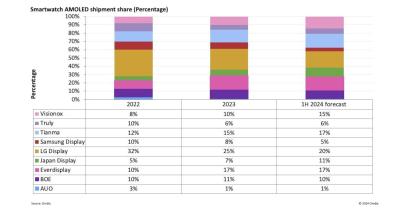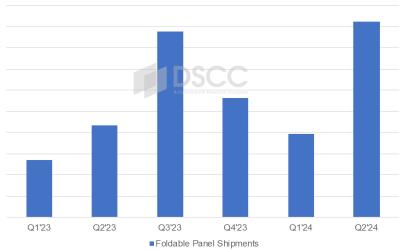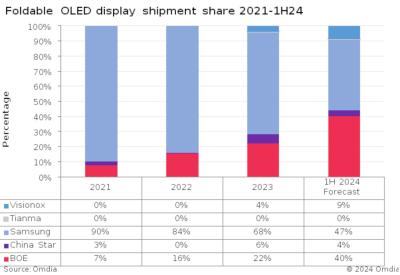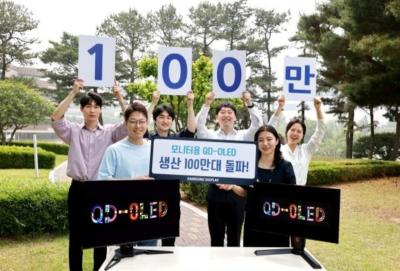Samsung purchases Orthogonal's mask-less OLED production IP
Reports from Korea suggested that Samsung Display acquired 5 patents from US-based Orthogonal, that contains the company's mask-less OLED production process. With this purchase, SDC has a path towards developing its own maskless OLED production.
Maskless OLED production is of high interest lately, as these technology could offer higher pixel aperture ratio leading to higher efficiency, brightness and lifetime and brighter OLEDs, compared to FMM-based production processes. JDI for example claims its eLEAP technology enables an 2X increase in brightness and a 3X increase in lifetime, coupled with reduced production costs.
LG Display gets approved to supply AMOLEDs for the iPhone 16 Pro Max before Samsung Display
Reports from Korea suggest that Apple approved LG Display as a supplier for its upcoming iPhone 16 Pro Max, the most advanced iPhone model to be released this year. Interestingly, LGD apparently got the approval before Samsung Display, Apple's main OLED supplier.
If true, this is the first time that Apple approves LGD first. This does not necessarily mean anything, but it does mean that the technology gap between Samsung and LGD is low, if present at all. Samsung has much higher production capacity compared to LGD, note. The two companies will likely produce panels for all four iPhone 16 models, and it is reported that BOE will supply some panels for the two standard iPhone 16 models.
Omdia: adoption of OLEDs in smartwatch applications grows to 37% of the market
Omdia says that it expects the global smartwatch display market to reach 359 million units in 2024 (up from 259 million units in 2022). OLEDs hold a 37% market share (132 million units).
Omdia says that the leading smartwatch OLED producers, in the first half of 2024, are LG Display (Apple's main supplier), Everdisplay and Tianma - which together hold a 53% market share. China-based wearable OLED production accounts to 64% of the total market.
DSCC sees 9.25 million foldable OLED panels shipped in Q2 2024, with Samsung returning to a dominant position
DSCC says that foldable OLED shipments increased 46% in the first quarter of 2024 compared to last year, to reach almost 4 million units.
BOE was leading the market in Q1 2024, with a market share of 48% (up from 43% in Q1 2023). The two leading foldable smartphone models were Huawei's Mate X5 and Pocket 2, using panels supplied by BOE. In fact Huawei had a market share of 55% in the foldable smartphone market.
Omdia estimates that China's foldable OLED panel production will surpass Korea's in H1 2024
Omdia says that China's OLED makers have been making rapid progress with their foldable OLED capabilities, to the point that in the first half of 2024, China's production of foldable OLED panels will surpass Korea's.
Omdia predicts that in the first half of 2024, Samsung Display will produce 5.7 million panels, while China's producers will produce 6.4 million panels. The market is set to grow quickly, from 10.7 million units in 2021 to 30 million panels in 2024. The market leader remains Samsung (47% in 2024H1), followed by BOE (40%), Visionox (9%) and TCL CSoT (4%).
Rumors suggest Lenovo is developing a tablet with Samsung's slidable 17-inch AMOLED display
There are some reports that Lenovo is developing a new tablet device that will use Samsung's 17" slidable AMOLED display. The display will be 13" in size when closed, and will be able to roll (slide) up to 17". Lenovo hopes to launch the tablet by 2025.
Back in 2022, Intel demonstrated a laptop device with a 17" rollable AMOLED display, produced by Samsung Display. Since then SDC demonstrated several similar concepts, including a panel that is both foldable and rollable.
Some Apple iPad Pro customers complain of noticeable grain in the new OLED tablets
Earlier this month Apple announced its 2024 iPad Pro devices, Apple's first tablets with AMOLED displays, using tandem panels produced by LG Display and Samsung Displays. Some customers have complained about an annoying grain pattern in the new display:
This is especially noticeable in dark environments. It seems as if the 11" model is more affected by the 13" one. The 11" panel is produced exclusively by Samsung Display, while the 13" is made by both Samsung and LG Display. It could be that this is a problem only at Samsung's panels.
Samsung Display says it shipped over a million QD-OLED monitor panels
Samsung Display announced that it shipped over a million QD-OLED monitor panels. SDC started producing these panels in 2022, and is currently offering a wide range of panels, from 27-inch to 49-inch, mostly targeting gaming monitors. SDC is working with 10 monitor producers, that have released over 90 QD-OLED monitor models.
Samsung says that it plans to expand its QD-OLED market, by targeting professional monitors and content creation monitors.
Samsung shows its latest OLED and QD-EL displays at Displayweek 2024
Samsung Display had a rather large booth at Displayweek 2024, showing its latest OLED displays and technologies. Samsung showed several displays - including foldable smartphone panels, laptop and tablet displays, two QD-OLED displays, its 9.4" round automotive AMOLED, and more.
One interesting display was a panel that combines a foldable and a rollable display, that can open up to an impressively large display. Samsung brands it as a Flex Note Extendable Display.
IDC: Samsung leads the OLED monitor market, with a 34.7% market share
Samsung Electronics started selling OLED monitors in 2023, and one year later, according to IDC, it leads the global OLED monitor market, with a 34.7% market share by revenues. It also is the leader in shipments with a share of 28.3%.
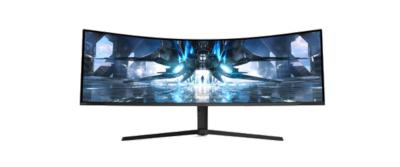
Samsung's first monitor was the 34" OLED G8, a QD-OLED gaming monitor. Since then Samsung released several new OLED monitors, and it's likely that the OLED Monitor market is set for fast growth ahead.
Pagination
- Previous page
- Page 5
- Next page

